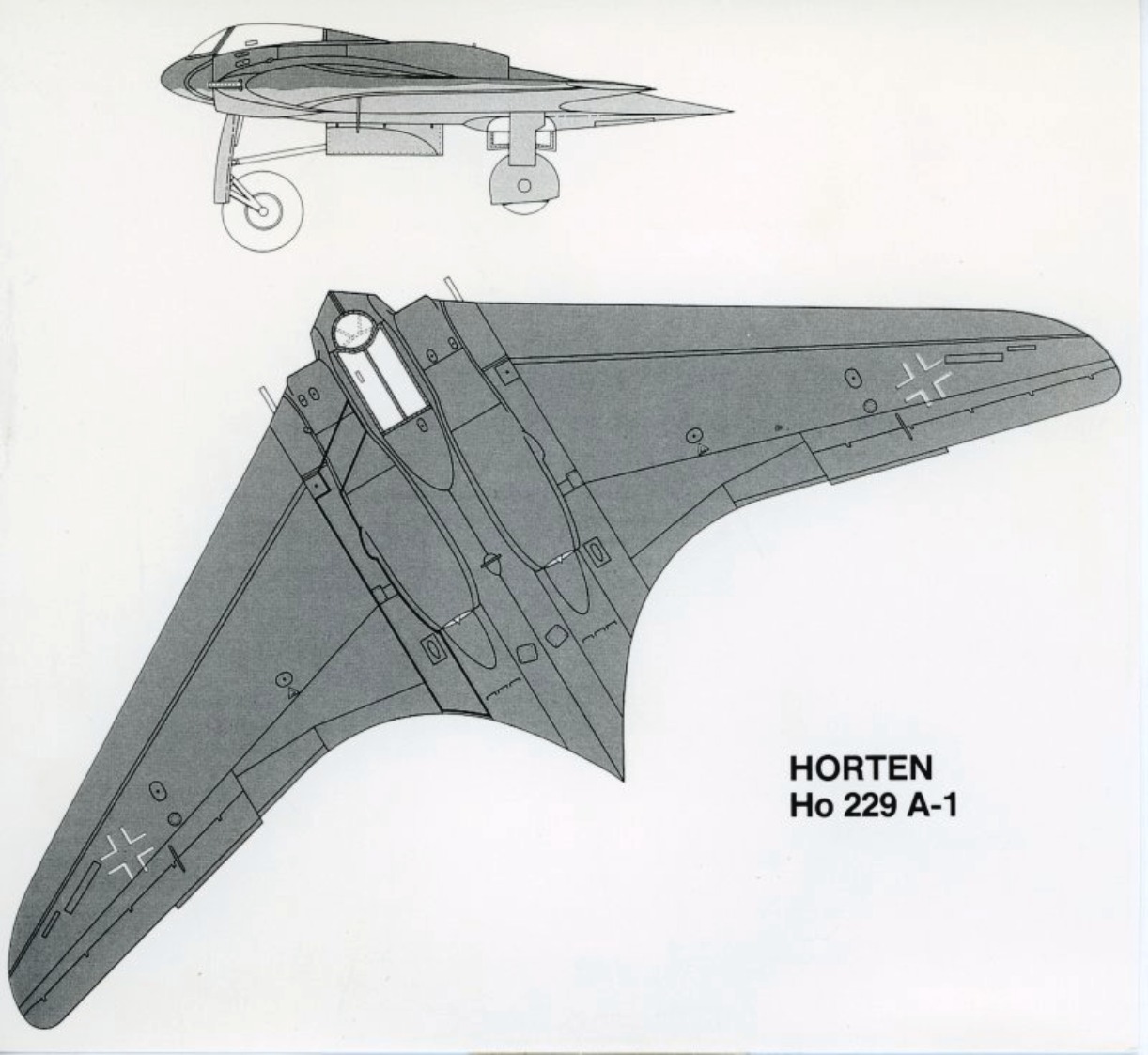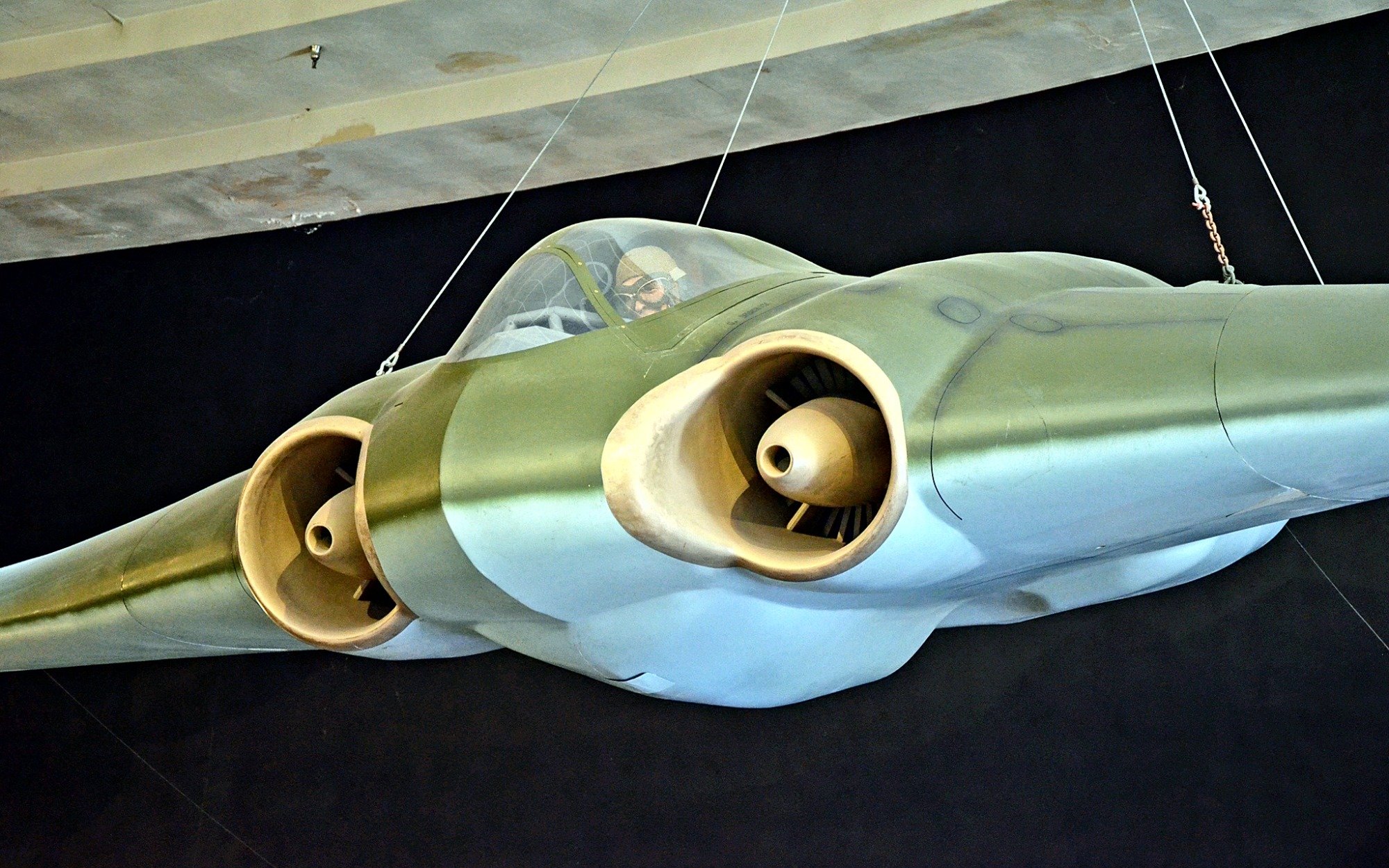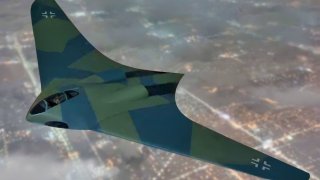Ho 229: Hitler Built A ‘Stealth Fighter’ That Looks Like the B-2 'Spirit' Bomber
The only extant specimen of a Ho 229 is currently undergoing restoration at the Smithsonian National Air and Space Museum in Washington, D.C
Meet the Ho 229: When most of us think of aviation history we think of jet-powered “flying wing” type of aircraft, chances are you might think of the B-2 Spirit (the original “Stealth Bomber”) and perhaps the prototype Northrup YB-49 that featured memorably in the 1953 filmic adaptation of the H.G. Wells classic sci-fi novel “The War of the Worlds.”
However, it was actually Nazi Germany that was the first nation to build a jet-powered flying wing, that being the Horten Ho 229.
This is not surprising when you consider that the Third Reich also invented the following aerial Wunderwaffen (‘Wonder Weapons”) during the Second World War: the world’s first operational jet fighter, the Messerschmitt Me 262 “Schwalbe (Swallow);” the world’s first operational jet bomber, the Arado Ar 234; the first operational rocket fighter, the Me 163 Komet; and the fastest operational jet fighter of WWII, the Heinkel He 162 Volksjäger/Spatz/”Salamander.”
The Ho 229 was among these military hardware milestones.
Ho-229 Early History and Specifications
The Horten Ho 229 aka Horten H.IX aka Gotha Go 229 made her maiden flight (albeit in glider mode) on March 1, 1944; the first powered version flew on February 2, 1945. The plane looks sort of like a stealth fighter or even the B-2 bomber.
As noted by BBC Future correspondent Stephen Dowling, the flying wing is “a design which ditches the traditional tail fin at the back. This design helps reduce the aircraft’s size, and creates a smoother shape – one less likely to bounce back radar signals being sent out to detect it … That aircraft … might be a footnote in aviation history, but it was so far ahead of its time that its aerodynamic secrets are still not completely understood. In fact, there’s a chief scientist at NASA still working to discover just how its creators managed to overcome the considerable aerodynamic challenges that should have made it unflyable.”
The plane was named for and designed by the Brothers Horten, namely Walter (1913-1998) and Reimar (1915-1994), both former fighter pilots who had cut their teeth on the Messerschmitt Bf 109; Reimar later transferred to the glider pilot school in Braunschweig and earned his Ph.D. in mathematics from the University of Göttingen.
Die zwei Brüder (The two brothers) built a total of three prototypes, funded by a half-million Reichsmarks allocated by Luftwaffe head honcho Hermann Göring. The Luftwaffe’s desire was to fulfill a so-called “3×1000” requirement, i.e. the capability to carry 1,000 kilograms (2,200 pounds) of bombs at a distance of 1,000 kilometers (620 miles) with a speed of 1,000 kilometers per hour (620 miles per hour). Jet propulsion was only theoretically up to the task, with the real-world problem being that the jet engines of the time were relatively primitive and fuel hungry. The Hortens figured on addressing that issue with the flying wing configuration due to its aerodynamic efficiency.
What Went Wrong?
Well, simply put, the only actual powered example (as opposed to the glider version mentioned in the preceding section), the X.IX V2, crashed on its third flight on February 18, 1945, killing its test pilot, Leutnant (Lieutenant) Erwin Ziller. Some foreshadowing might’ve been evident in the plane’s second flight, wherein a crash landing also took place, requiring extensive repairs.
Nearly 100 production aircraft had been ordered, but the fatal crash abruptly rendered that business transaction kaput.

Where Are They, er, Where Is It Now?
The only extant specimen of a Ho 229 is currently undergoing restoration at the Smithsonian National Air and Space Museum in Washington, D.C. As per the Museum’s official info page:
“The U. S. Army found the Ho 229 prototypes V3 through V6 at Friedrichroda, Germany, in April 1945. The V3 (also referred to as Horten IX V3) was approximately half finished and nearest to completion of the four airframes. Army personnel removed it three days later and shipped it from Germany to the U.S. The aircraft arrived at what is now the Paul E. Garber Preservation, Restoration, and Storage Facility in Suitland, Maryland, around 1950 … The Horten Ho 229 V3 is currently visible to the public inside the Mary Baker Engen Restoration Hangar at the Steven F. Udvar-Hazy Center in Chantilly, Virginia, while staff work to document the aircraft’s condition and stabilize its delicate structure.”

About the Author
Christian D. Orr is a former U.S. Air Force Security Forces officer, Federal law enforcement officer, and private military contractor (with assignments worked in Iraq, the United Arab Emirates, Kosovo, Japan, Germany, and the Pentagon). Chris holds a B.A. in International Relations from the University of Southern California (USC) and an M.A. in Intelligence Studies (concentration in Terrorism Studies) from American Military University (AMU). He has also been published in The Daily Torch and The Journal of Intelligence and Cyber Security. Last but not least, he is a Companion of the Order of the Naval Order of the United States (NOUS).
All images are Creative Commons.


